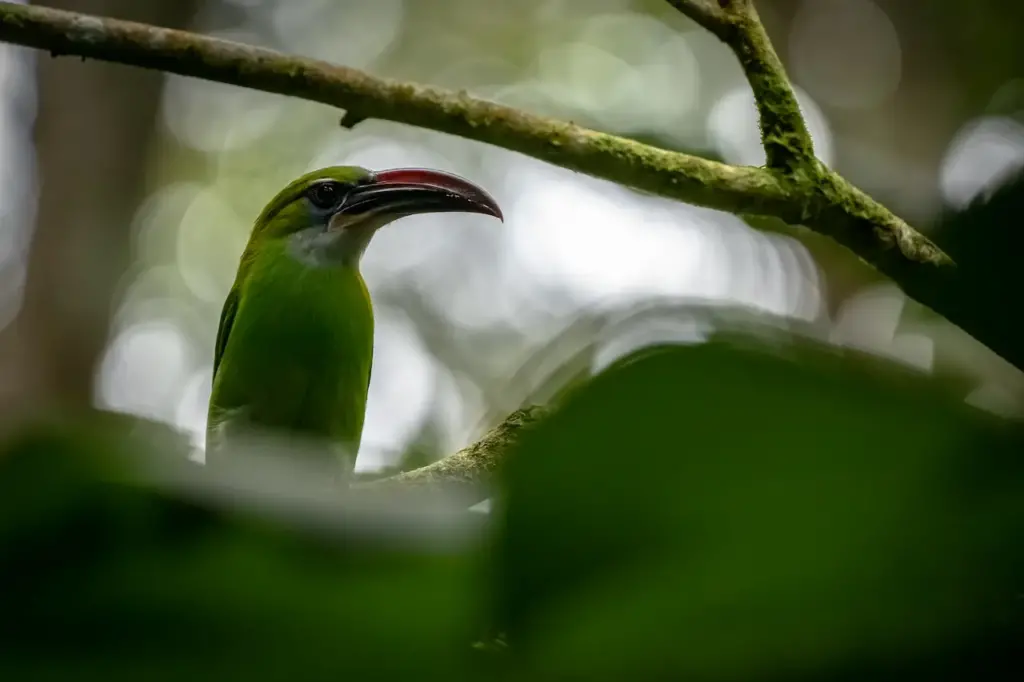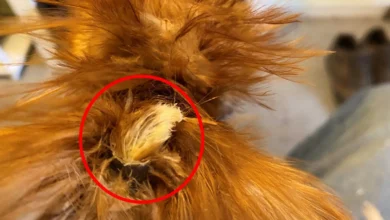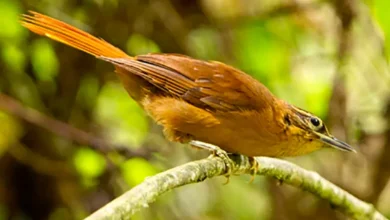The Groove-billed Toucanets (Aulacorhynchus sulcatus) is a toucan found in mountains of northern Colombia and northern Venezuela; where they inhabit subtropical and upper tropical humid forest and woodland, occasionally also occurring in gardens.

The Groove-billed Toucanet is fairly common in its range, and therefore considered Least Concern by BirdLife International. This species occurs in several protected areas, including the Henri Pittier National Park in Venezuela.
Its subspecies – the Yellow-billed Toucanet (A. sulcatus calorhynchus) – is found in the western part of the species’ range, and is considered by some authorities to be a separate species. Hybrids are known to occur in the region where the ranges of these two subspecies overlap.
Description
The Groove-billed Toucanet averages 35 cm (14 in) in length.
Like other members of the Toucanet family, the Groove-billed Toucanet’s plumage is mostly green. It has blue rings around the eyes (ocular skin)
Nominate / Sub-species Differences:
- The large black bill has maroon markings in the nominate species; the maroon markings are replaced by yellow in the subspecies, the Yellow-billed Toucanet.
- The throat is white in the nominate species, but pale bluish in the subspecies, the Yellow-billed Toucanet.

Breeding / Nesting
The mating ritual is a fun-loving affair for toucans, as they throw fruit to one another.
Like all of their other activities, nesting happens high up in hollow areas in trees. The bill is not effective for digging or any other type of extensive excavation work and so they must rely on holes already formed by other means.
The nests are not lined, but the two to four shiny white eggs that are laid each year rest on a few wood chips created while enlarging the opening or on various kinds of regurgitated seeds collected for this purpose.
Parents share equally in incubation duties, but rarely sit on the nest for more than an hour at a time and the eggs are often left uncovered. Both parents share in feeding fruit to the babies for up to 8 weeks.
After 16 days the nestlings are born blind, with no trace of down on their pink skin. The bill is unremarkable until about 16 days old when it takes on the distinguishing features of the toucan, and requires up to four months to develop fully. Feathers begin to expand at 4 weeks.

Babies have pads on their elbows that protect their feet by keeping them elevated until they fledge.
Breeding in captivity requires attention to a number of details. Even successful breeders report rates as low as 30% for the incubation of eggs.
Photo, Video and/or Article contributions are welcome! You can Upload articles and images here. Thank you!
Beauty Of Birds strives to maintain accurate and up-to-date information; however, mistakes do happen. If you would like to correct or update any of the information, please contact us. THANK YOU!!!



